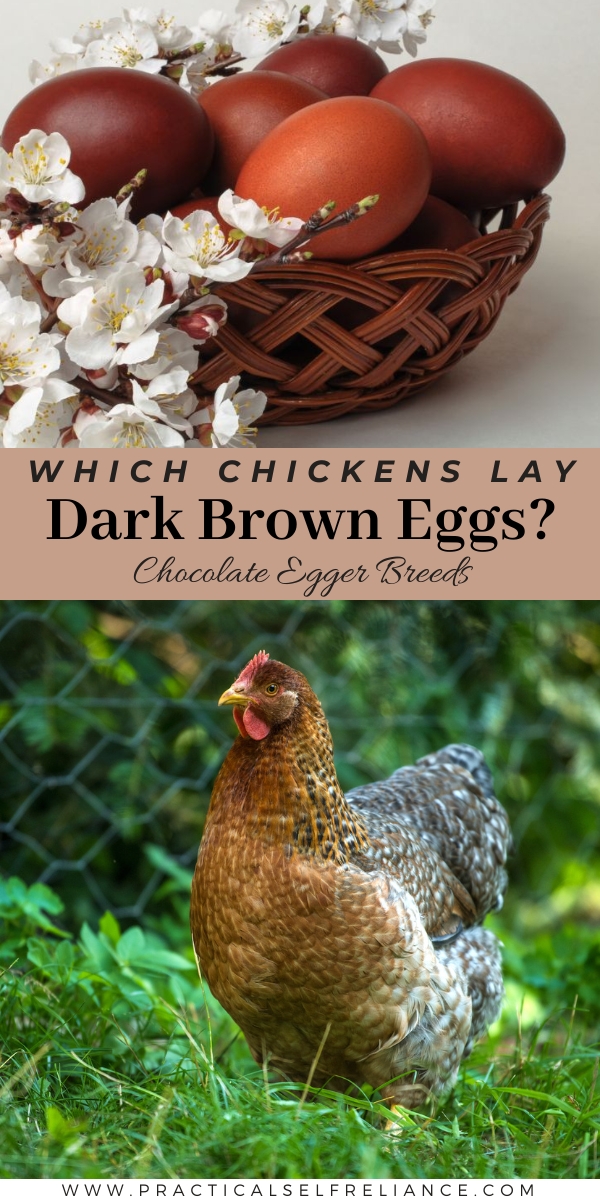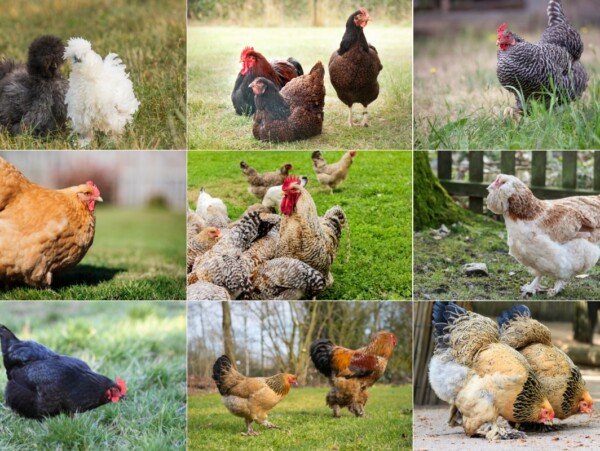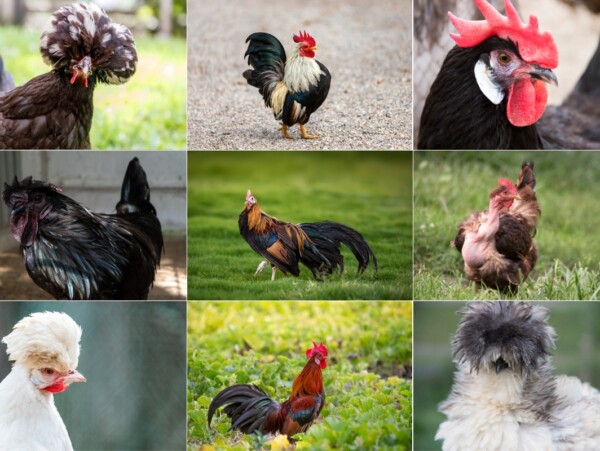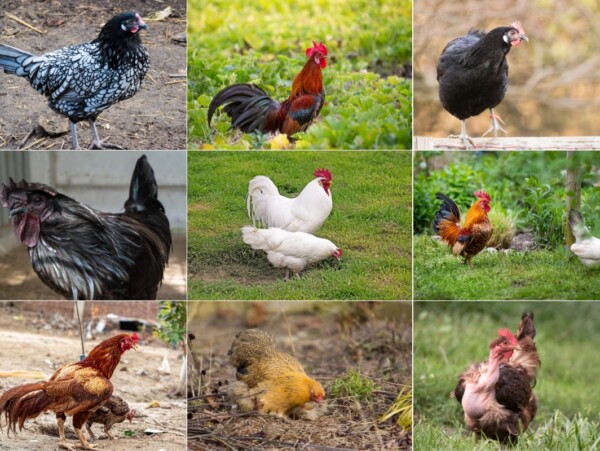Affiliate disclosure: This post may contain affiliate links. Please see our Privacy Policy.
Dark brown chicken eggs are a striking addition to your egg basket. Sometimes known as “chocolate eggers,” chicken breeds that lay extra dark brown eggs will all interest to your egg basket.
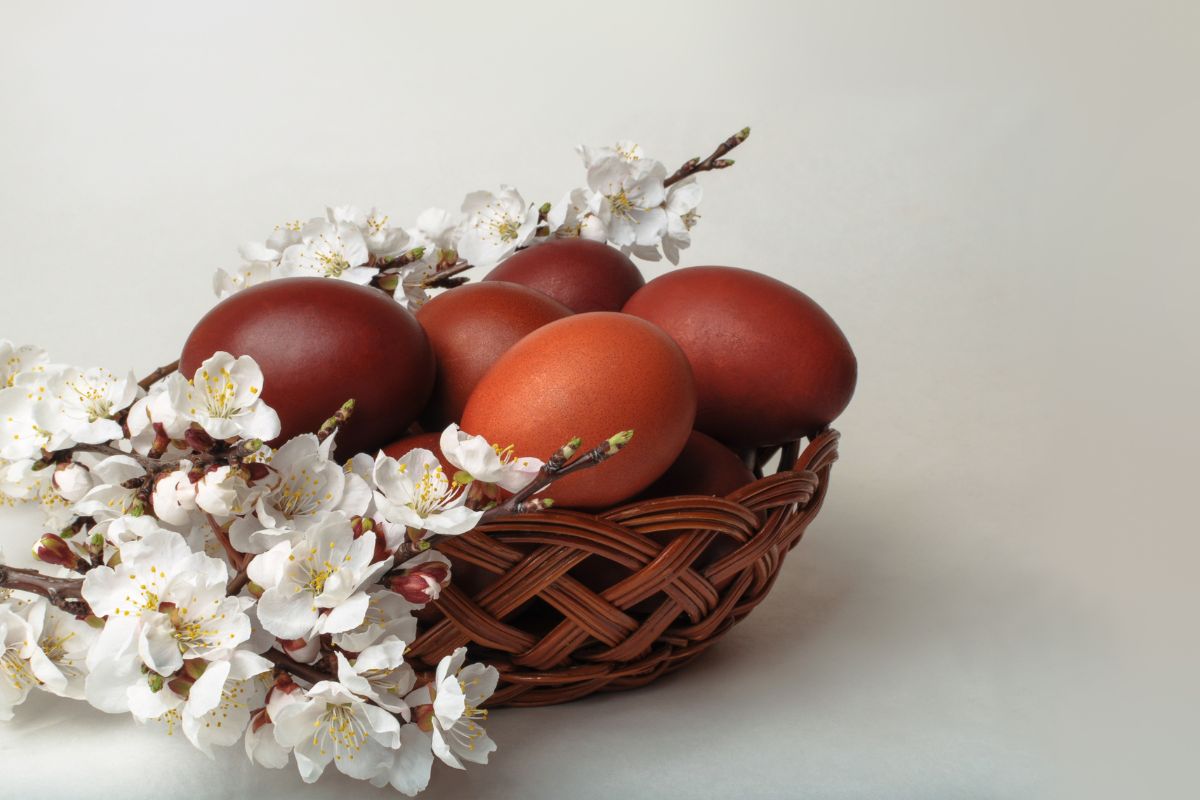
If you’ve ever wondered which chicken breeds lay fantastically dark brown eggs, you’ll be happy to learn there are several options when it comes to achieving this striking color. The special breeds that lay these eggs have interesting backstories and big personalities to match the unique nature of their egg shells; they also come in all shapes, sizes, and temperaments.
These dark brown eggs aren’t your typical brown eggs. Instead, they’re a rich, deep brown that’s reminiscent of dark chocolate or even freshly tilled soil. The color of these shells will pop when placed next to the other eggs in your basket. We’re going to explore five different breeds in this post, as well the science behind egg shell formation and the geographical origins of these incredible breeds.
(If you’re interested in collecting a rainbow of eggs from your backyard flock, I’d suggest reading my beginners’ guide to chicken egg colors, where I take you through all the different color options… including easter egger chicken breeds that lay blue eggs and olive egger breeds that lay green eggs.)
How are Dark Brown Chicken Eggs Formed?
At the very beginning of the egg-forming process, all hens produce eggs that have white shells. This is because egg shells are made of calcium carbonite, a naturally-occurring mineral that is naturally white.
It takes about 26 hours for an egg to form and move through the hen’s oviduct, a tube-like part of the hen’s anatomy that is roughly two-feet in length. In the final stages of this process—typically in the last 90 minutes its journey, a pigment is formed over the white shell, coating it with a color that corresponds to the breed of the hen. If you’ve ever noticed how the inside of a colored egg shell is white inside, it’s because the way the pigment is added at the very end.
One interesting exception to this rule is for chicken breeds that lay blue eggs. The pigment is so concentrated it permeates the entire shell wall, resulting in eggs shell that are blue through-and-through.
Where do Dark Brown Egg Chickens come from?
Chicken breeds that lay dark brown eggs originated in Europe across several different countries including France, Germany, Spain, and the Netherlands. Because most of these breeds aren’t technically recognized by the American Poultry Association (but are recognized by its European counterpart organizations) they can be somewhat difficult to find in the United States. However, a reputable poultry breeder should be able to help you source these dark brown egg-laying breeds.
Because these breeds come from so many diverse climates, there’s significant variety in terms of temperature hardiness. For example, if you live in the Southern United States you’ll find that breeds originating from Spain and the Mediterranean region might be best-suited for you. Likewise, those from the Netherlands and other relatively cooler climates will work best if you live in a region of the United States that has cold winters and milder summers.
Dark Brown Egg Laying Chicken Breeds
The following chicken breeds are known for their dark brown eggs (or brown eggs with beautiful dark brown speckled patterns). Whether you have plenty of room for the chickens to roam or are working with a smaller space, you’ll find a good breed option for any type of living situation.
Maran
First bred in Marans, France, Maran hens lay some of the darkest brown eggs around—you can expect 3 large, dark brown eggs a week or to 210 eggs per year. For ongoing super-dark brown eggs, breeders suggest allowing the darkest eggs to hatch, although it’s also been noted that these eggs are more difficult to hatch than their light brown counterparts. Adult Maran hens have an average weight of 7 pounds and come in several different colors.
Known for their quiet and gentle temperament, Marans are cold hardy, and don’t mind confinement, but are not particularly well-suited to hot temperatures.
Barnevelder
This century-old breed hails from the Netherlands, where it was first bred for its egg-laying capability and beautiful dark brown eggs with occasional speckles. Barnevelders, also known as “Barnies,” typically lay 3 to 4 large brown eggs per week or 150 to 200 eggs per year. Barnevelders are a fairly uncommon breed, especially in North America, but if you have a small space or live in an urban setting they’re a breed you might want to look into. Barnies come in several colors, including gold, silver, and blue double-laced feather patterns as well as black, white, silver, and blue plumage.
Barnevelders are cold hardy and will continue to lay eggs throughout the winter—they’ll tolerate the heat but not when it’s combined with humidity, shade and cold water is an absolute must. These birds are excellent foragers and have active dispositions which in turn helps them avoid predators.
Bielefelder
Bielefelders are affectionately known as “gentle giants” thanks to their docile personalities and large size (hens can weigh close to 10 pounds!). First bred in Germany in the early 1970s, this relatively new breed is a star egg layer; you can expect up to 5 large dark brown eggs per week or up to 280 per year (and when I say large, I mean large—Bielefelders lay the largest eggs around!)
This breed is so gentle, you should be able to remove their eggs out from under them without having to worry about getting pecked in the process. Bielefelders are hardy to both cold and hot temperatures and will continue to lay eggs over the winter. Another bonus? They make excellent free range birds, allowing you to cut down on feed costs (they also love leftover fruits and veggies, particularly watermelon and leafy greens).

Penedeseneca
If you’re on the hunt for the darkest brown eggs you can find, this is the breed for you. In fact, the color is so highly pigmented the eggs can appear black—be careful handling these eggs as the pigment on newly laid eggs can rub right off. This breed first originated in Spain which means it’s particularly hardy in warmer temperatures (not so much in cold temperatures).
A smaller breed (hens will weight about 4 pounds), Penedesenecas will lay 3 to 4 medium-sized dark brown eggs a week or up to 200 eggs per year. Penedesenecas should have plenty of room to roam free range as they don’t tolerate confinement well and are very active.
Welsummer
You might recognize a Welsummer because of its famous likeness—Cornelius, the Kellogg’s rooster! Welsummers were first bred in the village of Welsum in Holland a century ago and are considered a heritage bred in the Netherlands. Welsummers are fairly difficult to find in the United States, but enjoy a greater popularity in Europe (the British Royal family counts this breed as a particular favorite).
Welsummer hens lay large brown eggs with dark brown speckles (so not a true uniform dark brown overall color), and you can expect to collect between 160 and 200 eggs per year. Welsummers are excellent foragers, are heat-hardy but less-so for cold temperatures, and are fairly friendly and docile.
Chicken Guides
Looking for more guides to help you with your backyard flock?
- How Much Does it Cost to Raise Chickens?
- Easy Homemade Pickled Eggs
- Duck Eggs vrs. Chicken Eggs: What’s the Difference?
- Storing Eggs in Limewater (Keeps 12+ Months!)
- 30+ Ways to Preserve Eggs
